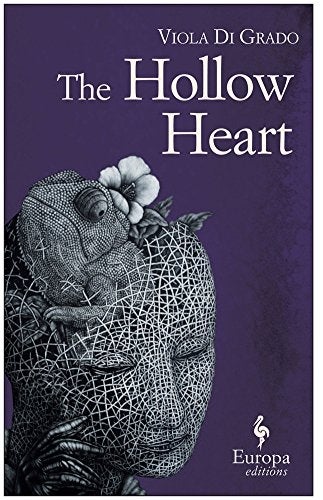The Hollow Heart, by Viola di Grado - Book review: Each sentence lures us further into the flies and blood-filled dreamworld
Death – the inside story

Your support helps us to tell the story
From reproductive rights to climate change to Big Tech, The Independent is on the ground when the story is developing. Whether it's investigating the financials of Elon Musk's pro-Trump PAC or producing our latest documentary, 'The A Word', which shines a light on the American women fighting for reproductive rights, we know how important it is to parse out the facts from the messaging.
At such a critical moment in US history, we need reporters on the ground. Your donation allows us to keep sending journalists to speak to both sides of the story.
The Independent is trusted by Americans across the entire political spectrum. And unlike many other quality news outlets, we choose not to lock Americans out of our reporting and analysis with paywalls. We believe quality journalism should be available to everyone, paid for by those who can afford it.
Your support makes all the difference.In her second novel, The Hollow Heart, the London-based, Italian author Viola di Grado embraces the gothic and macabre with relish. The narrator, Dorotea Giglio, is dead at the age of 25. She has killed herself by slitting her wrists in her bath and she embarks on a swirling, luminous journey into the afterlife. That we are convinced by this is testament to the hypnotic and mesmerising quality of Di Grado’s writing.
Dorotea observes the gloomy machinations of death – rigor mortis, putrefaction, oblivion – with deadpan coolness. A disembodied ghost, no longer part of the world, she clings on, unwilling to let go of her former life. Images of insects creeping under pale skin and long hair bring to mind a morbid, distinctly female, romanticism of death and self-destruction.
This eerie romanticism is firmly rooted in a hyper-contemporary world. Her ex-boyfriend dumped her “in seven hundred characters”. A corpse is “just right for stirring pity on social media” and death is consolidated by the erasing of her Facebook profile. There is an obsession with the surface and curation of images that trails back to memories of life with a dysfunctional mother using her as a photographic model as a child.
The plot spirals inwards, tightly wound, and there is a confessional earnestness which can be unsettling and verges on an over-exposure of the self. By page 16 we have been introduced to three abandonments. Father issues are displayed almost proudly. There is much talk of anti-depressants.
Ultimately, it is the writing that elevates this book. Quirky, crisp, with plenty of dark, clever humour: “My skeleton and I love each other. We’re in a kind of open relationship.” Peppered throughout are references to iconic female figures who form a constellation of dark angels responsible for guiding Dorotea towards suicide: Violet Trefusis, Amy Winehouse, Frieda Kahlo and Sinead O’Connor.
The novel is a fairy tale gone bad, with echoes of Angela Carter without the Postmodernism. At one point, Dorotea says of a programme flickering on the TV, “they were showing an American series with vampires or ghosts or young couples in love, it wasn’t clear yet”. The same can be said of The Hollow Heart. I am not sure if it is a literary young-adult novel wrapped in a ghost story, but in the end definitions don’t matter because the writing is pristine. Each sentence lures us further into the flies and blood-filled spirals of Di Grado’s dreamworld and, most importantly, we are willing to follow her.
Suzanne Joinson is the author of A Lady Cyclist's Guide to Kashgar
Join our commenting forum
Join thought-provoking conversations, follow other Independent readers and see their replies
Comments